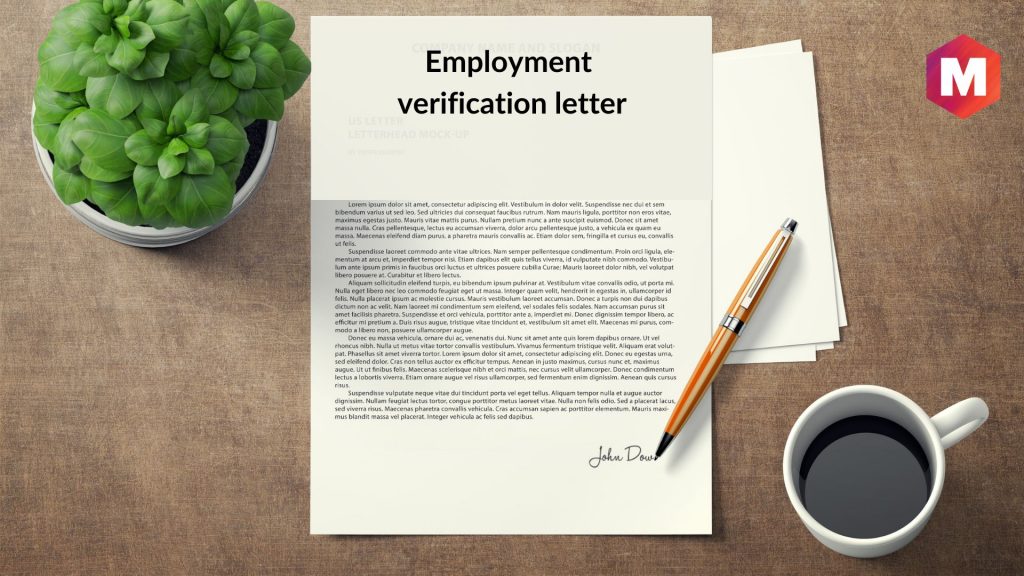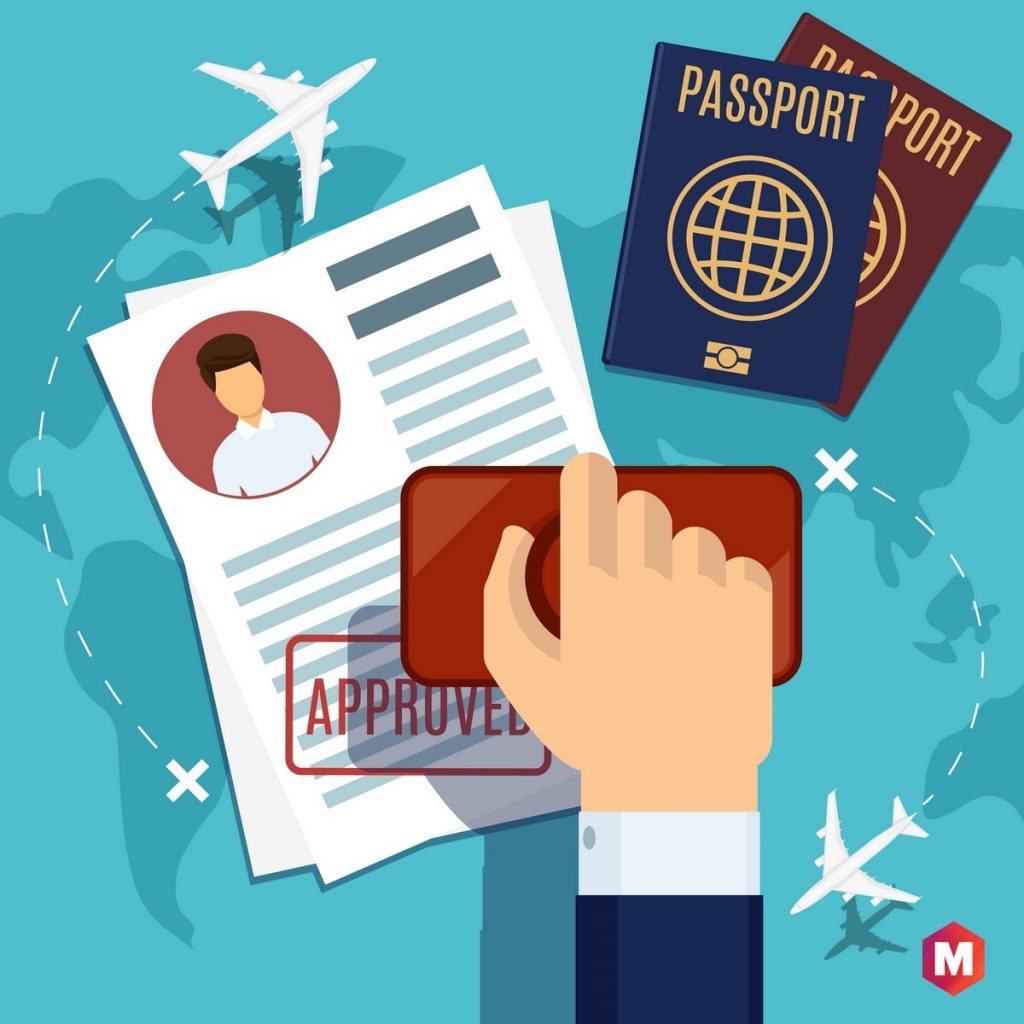Table of Contents
What is an Employment Verification Letter?
An Employment Verification Letter is a document that confirms an individual’s employment status with a current or former employer. This letter is often required when applying for a loan, rental agreement, or another type of financial assistance. Employment verification letters can also be used to confirm an individual’s eligibility for government benefits.
The Employment Verification Letter should be on company letterhead and include the dates of employment, job title, and salary information. The letter should be signed by a supervisor or human resources representative. Employment verification letters can either be provided in person, by mail, or via email.
Why Employees may need an EVL?
There are many reasons why an employee may need an Employment Verification Letter. Some common reasons include
- Applying for a loan: Before accepting a home loan or automobile loan, the lender wants to be sure that the applicant has a steady job and enough money to cover monthly expenses.
- Renting an apartment or house: A potential landlord may request an Employment Verification Letter to confirm that the applicant has a steady income.
- Applying for government benefits: Eligibility for many government benefits, such as food stamps and housing assistance, is based on income levels. Employment verification letters can be used to confirm an individual’s income level and, as a result, their eligibility for certain benefits.
- Pursuing an opportunity with another employer: In some cases, an individual may need to provide an Employment Verification Letter when applying for a job with another employer. This is especially common when the new employer requires a background check.
- Requesting a loan payment reduction or deferral: If an individual is experiencing financial hardship, they may request a reduction or deferral of their loan payments. Employment verification letters can be used to confirm an individual’s employment status and income level, which may impact the lender’s decision.
What to include in Employment Verification Letters?
An employment verification letter sample should include
- Employee name
- The dates of employment
- The employee’s job title
- Employer address
- Employee job description
- Salary information
- A statement confirming that the individual is currently employed (or was formerly employed) by the company
- A signature from a supervisor or human resources representative
- Name and address of the company requesting verification, etc
Tips to write an effective Employment Verification Letter
Here are a few tips to write an Employment Verification Letter
- It should be on company letterhead: The Employment Verification Letter should be printed on the company’s official letterhead. This adds a level of legitimacy to the letter.
- Include all relevant information: Employment verification letters should include all relevant information, such as the employee’s job title, dates of employment, and salary information.
- Following the business letter format: Employment verification letters should follow the standard business letter format. This includes the date, the recipient’s address, a salutation, the body of the letter, and a signature.
- Be clear and concise: Employment verification letters should be clear and to the point. There is no need to include excessive information or flowery language.
- Proofread the letter: Before sending the Employment Verification Letter, be sure to proofread it for any spelling or grammatical errors. Employment verification letters should be error-free.
- Providing your contact information: Include your name, title, and contact information in the letter. This will allow the recipient to get in touch if they have any questions.
You can find many employment verification letter samples online, but it is always best to get a letter from your employer. If you are not sure how to write an EVL, you can use an employment verification letter template or sample as a guide, but make sure to tailor it to your specific situation.
How to Verify a Proof of Employment Letter?
If you are an employer, you can verify the Employment Verification Letter by
1. Looking up the Business Entity
The first step is to look up the business entity. You can do this by visiting the Secretary of State’s website and searching for the company. Once you have found the company, you can check to see if it is in good standing. If the company is not in good standing, likely, the Employment Verification Letter is not legitimate.
2. Calling the Employer
If you are unable to find the company or if you have any doubts, you can call the employer. Ask to speak to human resources and verify that the Employment Verification Letter is legitimate. They should be able to confirm the employee’s dates of employment, job title, and salary information.
3. Obtaining Past Pay Stubs
If you are still not convinced, you can request the employee’s past pay stubs. This will help you to confirm the Employment Verification Letter.
4. Getting Past 2 Years of Tax Returns
Another way to verify the Employment Verification Letter is to request the employee’s past two years of tax returns. This will help you to confirm the employee’s income and employment status.
5. Running a Credit Report
If you are still not convinced, you can run a credit report. This will show you the employee’s current and past employers. You can also use this to verify the Employment Verification Letter.
How to Write an Employment Verification Letter
If you are an employer, you can write an Employment Verification Letter for a loan by
1. Getting the Request in Writing
The first step is to get the request in writing. The borrower should provide you with a signed authorization form that allows you to release information to the lender. This will help to protect you from any liability.
2. Verifying the Employment Information
Next, you will need to verify the employment information. This includes the borrower’s job title, dates of employment, and salary information. You can do this by looking up the employee in your company’s records or by speaking to their supervisor.
3. Drafting the Employment Verification Letter
Once you have verified the employment information, you can draft the Employment Verification Letter. Be sure to include all relevant information, such as the borrower’s job title, dates of employment, and salary information. Make sure to follow the standard business letter format and proofread the letter for any errors.
4. Sending the Employment Verification Letter
Finally, you will need to send the Employment Verification Letter. The borrower should provide you with the lender’s contact information. You can send the letter via email, fax, or mail.
When an EVL is Needed?
A few situations when EVL is needed are
1. When applying for a green card
If you’re the sponsoring family member on a family or marriage green card application, you’ll need to submit an I-864 financial support form (Form I-864, formally known as the “Affidavit of Support”) with US Citizenship and Immigration Services (USCIS). This form establishes that you have the financial assets needed to assist a relative who is applying for a green card.
2. Self-employed green card sponsors
If you’re sponsoring a relative or spouse for a green card and are self-employed, you’ll need to provide extra evidence to show that you’re eligible to sponsor them. This is primarily evaluated using your individual federal income tax return, but other factors may be considered as well. If you’re a business owner or an independent contractor and don’t have a Form W-2 to submit, USCIS will still want an employment verification letter.
3. When applying for a tourist visa
Employment verification letters aren’t just for green card applicants. If you’re applying for a B-2 tourist visa, for example, you’ll have to show that you have “ties” to your home country that will compel you to return after your trip. An employment verification letter can help to establish these ties.
4. When applying for a work visa
There are several visa options for foreign nationals wishing to work in the United States. The H-1B visa and the L-1A/L-1B intracompany transfer visas are two examples. The purpose of the employment verification letter for each of these categories will be somewhat distinct, but both letters should focus on your job experience.
5. Employment-based green cards
If you’re applying for an employment-based green card, your employer or human resources department will need to write Employment Verification Letters along with your application to verify employment. This letter should confirm your job offer and outline the terms of your employment.
6. Applying for a temporary business visa
There are a few different types of temporary business visas, including the B-1 business visitor visa and the E-1 treaty trader visa. If you’re applying for either of these visas, your employer will need to submit an Employment Verification Letter. This letter should confirm your job offer and outline the terms of your employment.
7. For mortgages or loans
If you’re applying for a mortgage or loan, your lender will likely require an Employment Verification Letter. This letter will confirm your employment status and income, which is necessary information for the lender to determine whether or not you qualify for the loan.
8. For renting a home
When you’re renting a home, your landlord will likely require an EVL. This letter will confirm your employment status and income, which is necessary information for the landlord to determine whether or not you qualify for the rental.
9. For applying for a job
Some employers will require an Employment Verification Letter as part of the job application process. This letter will confirm your employment status and income, which is necessary information for the employer to determine whether or not you qualify for the position.
How to Request an Employment Verification Letter?
If you need an Employment Verification Letter, there are a few different ways to request one
You should ask your supervisor or manager: The easiest approach to submit a request letter is by using this template. Simply make sure to include all necessary information and background.
Contact your HR: Employment verification letters are typically handled by the Human Resources departments. If you need a letter, reach out to your HR contact and they will likely be able to provide you with the necessary documentation.
Get a template from the firm or organization that is asking for it: Employment verification letters can vary in format and content, so it’s best to get a template from the firm or organization that is requesting the letter. This will ensure that you include all of the necessary information and format the letter correctly.
Using an employment verification service: Employment verification services are third-party companies that can provide employment verification letters on your behalf. This is generally a paid service, but it can be worth it if you need a letter quickly or don’t have the time to request one yourself.
Sample Employment Verification Letters
Employment verification letters are used to confirm an employee’s employment status and can be requested by current and potential employers, landlords, and other entities.
If you’re asked to provide an employment verification letter, it’s important to include all relevant information about the employee in question, as well as to format the letter correctly.
This sample employment verification letter can be used as a template when writing your own employment verification letter-
Dear _________________,This letter is to confirm that ______________ is employed at our company as a ___________. He has been with us since _____ and his current salary is ________ per year. If you have any further questions, please do not hesitate to contact us. Thank you, ______________(Employer) ________________(Title) _________________(Phone Number)
Conclusion!
Overall, an Employment Verification Letter is a very important document that can help you in many different situations – whether you’re applying for a new job or trying to improve your financial situation.
Be sure to request one from your employer and keep it updated regularly. Employment history and financial stability are two very important factors that prospective employers will consider, so you must have a strong Employment Verification Letter to present.
Liked this post? Check out the complete series on Human resources


